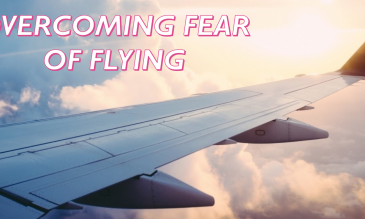What is Alitalia policy on pet acceptance?
Alitalia allows passengers to travel with their pets (such as a dog, cat, ferret, or canary), which may be transported in the passenger cabin, or in the cargo hold of the aircraft.
Are there any restrictions imposed or documentation required by Alitalia?
Dogs and cats must have the following documentation In order to travel within Italy and the EU:
- Legible microchip or tattoo.
- A passport issued by a veterinarian attesting to its health and listing the vaccinations your pet has received.
Remember that:
- Pets cannot travel within Europe if they have not yet had a rabies vaccine (i.e. pets younger than three months).
- Pets are not allowed on Alitalia flights with destination the U.K. or Ireland.
- You must pay attention to restrictions on bringing in certain animal species to a country.
Birds
In order to prevent the spread of avian (bird) flu, the EU and the Ministry of Health has placed a total ban on the importation of birds from Asia, South Africa, Romania, Russia, Turkey and the Balkan Peninsula. Parrots and parakeets cannot be transported for public health and safety reasons.
Pets in Cabin
If your pet is going to travel with you in the cabin, for the entire journey, the pet must remain in a carrier no larger than 24 cm high, 40 cm long and 20 cm wide. It is preferable to use a semi-rigid or soft carrier, in which case it can be slightly higher (26-28 cm height). The carrier may hold up to five animals of the same species, but the total weight must not exceed 10 kg, that is including the carrier and the food (7 kg including the carrier on flights from South Africa). The captain can transfer the pet to the cargo hold if it disturbs passengers.
Pet as Checked Baggage
The combined weight of the pet and pet carrier must not exceed 75 kg. You have to take into account that the maximum size of the pet carriers you can take on board varies, and not every aircraft has animal transport facilities.
To travel in the hold, the body of the carrier must be made from fiberglass or hard plastic only and have a metal door with a closure system that locks the closure points in the central part. You have to remove any wheels of the carrier. The side air inlets of dog carriers must be made of metal. For the pet’s comfort, the bottom of the carrier must be covered with a blanket, newspaper or other absorbent material. Remember that straw is forbidden.
The pet must not show signs of physical tiredness, not be injured and not have taken tranquilizers. It is also recommended putting at least a bowl inside the carrier. This must be empty, fastened and accessible without opening the carrier. The pet must not have a leash or a muzzle. In addition, these accessories must not be left inside the carrier.
Pets Fees
You must pay an additional charge in order for your pet to be able to travel with you. That will depend on the departure and arrival airports. When transported as checked baggage, pets and their carriers are always considered as excess checked baggage. Whether your pet will travel in the cabin or as checked baggage, the same additional charge will apply as follows:
- 40 EUR – domestic.
- 75 EUR / 95 USD – European flights, to/from North Africa.
- 125 EUR / 125 USD – to the US, Mexico.
- 200 USD – from the US, Mexico.
- 150 EUR – from Europe, Japan, China, Korea to Canada.
- 320 CAD – from Canada to Europe, Japan, the Middle East.
- 170 USD – from the Middle East to North/West Africa to Canada.
- 200 EUR/ 250 USD – all other routes.
Remember that the currency used for payment of the carriage of pets is EUR (from Europe, Japan, China, and Korea), CAD (from Canada) and USD (from the USA and the rest of the world).
Assistance Dogs
Passengers with disabilities can take Guide or Assistance Dogs on board at no charge. Passengers traveling with Assistance Dogs must provide at least 48 hours advance notice and check in one hour before the check-in time. Identification cards, presence of harnesses, written documentation, tags, or the credible verbal assurances of the passenger are evidence that the dog is a guide or service dog. For flights of 8 or more hours, the person must provide documentation that the animal will not need to relieve itself on the flight.
Guide Dogs are dogs trained by an organization affiliated with or recognized by the International Guide Dog Federation (IGDF). Assistance Dogs are dogs trained by organizations that meet the full Assistance Dogs International (ADI) membership criteria.
Guide or Assistance Dogs will not be permitted to occupy a seat, but they can accompany the passenger into the cabin. The passenger assumes full responsibility for compliance with all governmental regulations, requirements, or restrictions, including required health certificates of the country and entry permits, state, or territory from and/or to which the animal is being transported. The company will not be responsible in the event any such dog is refused entry into (or passage through) any country or territory.

 En
En Es
Es Fr
Fr







